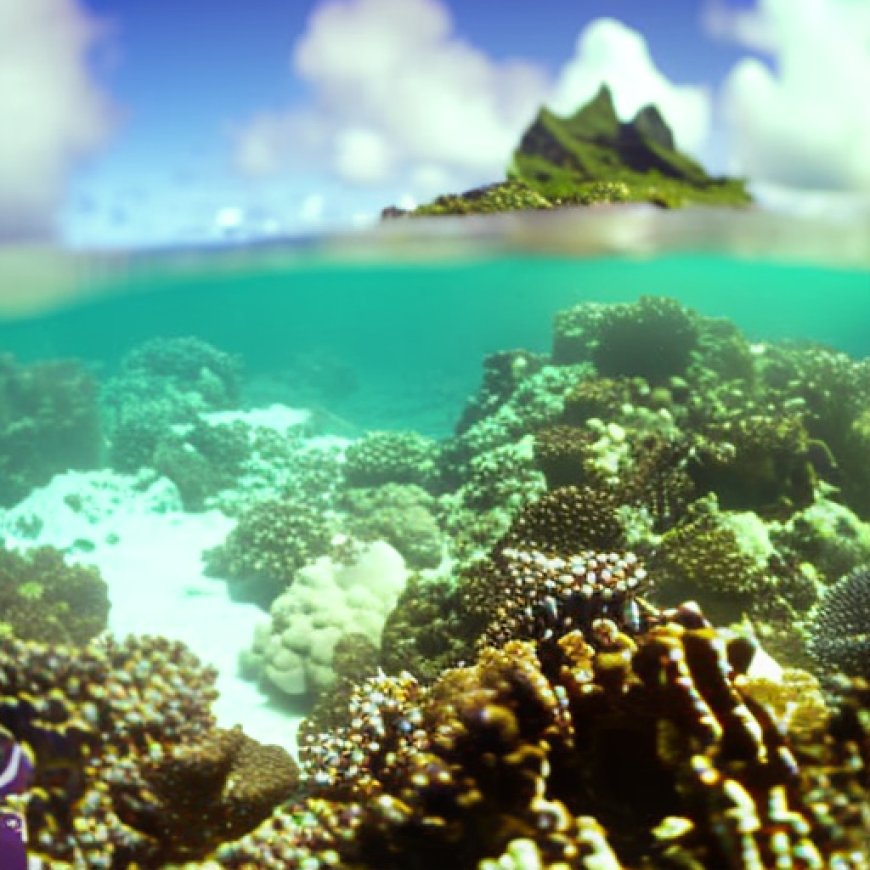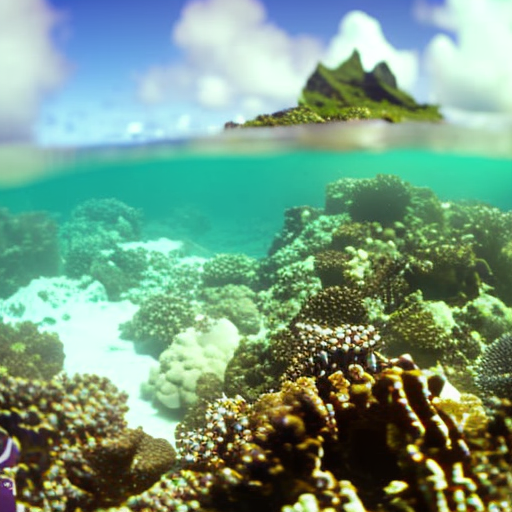Olympic tower construction at Teahupo’o, Tahiti could damage reef ecosystem
Olympic tower construction at Teahupo’o, Tahi EurekAlert


Impacts of Olympic Surfing Event on Coral Reefs in Teahupo’o, Tahiti
Introduction
In preparation for the 2024 Olympic surfing competition, a new judging tower is being constructed in the reef lagoon at Teahupo’o, Tahiti. Researchers from the University of Hawai‘i (UH) at Mānoa, UH Hilo, and Arizona State University and community partners in Tahiti recently published a study in Remote Sensing that assessed the potential impacts of the tower and emphasized the importance of protecting the valuable reef—both as an integral part of the ecosystem and a resource for the local community.
Concerns and Importance of Protecting Coral Reefs
The community of Teahupo’o, Tahiti, is concerned that coastal development to support the 2024 Olympic surfing event will impose harmful ecological impacts on their local coral reefs. The development is also altering and hardening the shoreline to provide new pathways to access the lagoon for boat transport to the judging tower. The researchers hope that the International Olympic Committee, appropriate government officials, and the greater international community can understand the devastating impact this will have on the coral reef habitat and the local community’s livelihood and well-being.
Construction of Judging Tower
Although there is an existing judging tower used by the World Surf League, the Paris 2024 Olympic organizers intend to invest approximately $5 million USD to construct a substantially larger tower to provide amenities for judges including toilets, air conditioning, and capacity for 40 people.
Assessment of Potential Impacts
The researchers teamed up with community members from Vai Ara O Teahupo’o and used 3D photogrammetry techniques to create high-resolution habitat maps of three sites that will be impacted by dredging and tower construction. The resulting mosaics were analyzed to quantify species diversity, coral colony count, coral colony size, and percent of the ocean floor covered by live coral and other living organisms.
Findings
The resulting data show that these sites support healthy and diverse coral communities that contribute to the ecological function of the larger reef system at Teahupo’o. In the 322 square meters (about the size of a tennis court) where the tower would be located, they identified the presence of 1,003 corals from 20 different species, indicating this site is a thriving coral habitat. The value of just the corals and algae at this small portion of the reef is estimated to be worth at least $170,000.
Potential Impacts on Coral Reefs
In addition to an assessment of the reef where the structure will be built, the team mapped the lagoon area where the reef is being dredged to accommodate barge transport of tower materials. This dredging could directly impact 2,500 square meters of the reef (about half the size of a football field). If this were to occur, it could cause a financial impact of at least $1.3 million by damaging the live reef habitat. The team’s impact estimates are conservative—only accounting for direct impacts and not including the potential financial impacts for communities who depend on these resources or the impact on the much greater lagoon area if water quality is affected.
Recommendations
With information in hand about the ecological impact and community concern, the researchers hope that the construction of the tower will be reassessed. They also suggest using alternatives to constructing a new tower, such as utilizing the existing tower used by the World Surf League for competitions. These recommendations aim to protect the coral reefs and hold any future disruptors accountable.
Sustainable Development Goals (SDGs)
- Goal 14: Life Below Water – Protect and sustainably use the oceans, seas, and marine resources for sustainable development.
- Goal 15: Life on Land – Protect, restore, and promote sustainable use of terrestrial ecosystems, sustainably manage forests, combat desertification, and halt and reverse land degradation and halt biodiversity loss.
Conclusion
The construction of a new judging tower for the 2024 Olympic surfing event in Teahupo’o, Tahiti has raised concerns about the potential ecological impacts on the local coral reefs. The research conducted by the University of Hawai‘i and Arizona State University highlights the importance of protecting these valuable reef habitats for both their ecological function and their significance to the local community’s livelihood. By considering alternative options and reassessing the construction plans, it is possible to mitigate these impacts and work towards achieving the Sustainable Development Goals related to marine and terrestrial ecosystems.
SDGs, Targets, and Indicators
1. Which SDGs are addressed or connected to the issues highlighted in the article?
- SDG 14: Life Below Water – The article discusses the potential impacts of coastal development on coral reefs, which are a vital part of marine ecosystems.
- SDG 15: Life on Land – The article mentions the importance of protecting the reef as an integral part of the ecosystem and a resource for the local community.
2. What specific targets under those SDGs can be identified based on the article’s content?
- SDG 14.2: By 2020, sustainably manage and protect marine and coastal ecosystems to avoid significant adverse impacts, including by strengthening their resilience and take action for their restoration, to achieve healthy and productive oceans.
- SDG 15.1: By 2020, ensure the conservation, restoration, and sustainable use of terrestrial and inland freshwater ecosystems and their services, in particular forests, wetlands, mountains, and drylands, in line with obligations under international agreements.
3. Are there any indicators mentioned or implied in the article that can be used to measure progress towards the identified targets?
- Indicator for SDG 14.2: The article mentions the use of 3D photogrammetry techniques to create high-resolution habitat maps of the impacted sites, which can be used to assess the potential impacts on coral diversity and coverage.
- Indicator for SDG 15.1: The article discusses the presence of diverse coral communities and their value in terms of U.S. valuations used by the Hawai‘i Division of Aquatic Resources.
Table: SDGs, Targets, and Indicators
| SDGs | Targets | Indicators |
|---|---|---|
| SDG 14: Life Below Water | Target 14.2: By 2020, sustainably manage and protect marine and coastal ecosystems to avoid significant adverse impacts, including by strengthening their resilience and take action for their restoration, to achieve healthy and productive oceans. | Indicator: Use of 3D photogrammetry techniques to assess potential impacts on coral diversity and coverage. |
| SDG 15: Life on Land | Target 15.1: By 2020, ensure the conservation, restoration, and sustainable use of terrestrial and inland freshwater ecosystems and their services, in particular forests, wetlands, mountains, and drylands, in line with obligations under international agreements. | Indicator: Presence of diverse coral communities and their value in terms of U.S. valuations used by the Hawai‘i Division of Aquatic Resources. |
Behold! This splendid article springs forth from the wellspring of knowledge, shaped by a wondrous proprietary AI technology that delved into a vast ocean of data, illuminating the path towards the Sustainable Development Goals. Remember that all rights are reserved by SDG Investors LLC, empowering us to champion progress together.
Source: eurekalert.org

Join us, as fellow seekers of change, on a transformative journey at https://sdgtalks.ai/welcome, where you can become a member and actively contribute to shaping a brighter future.







